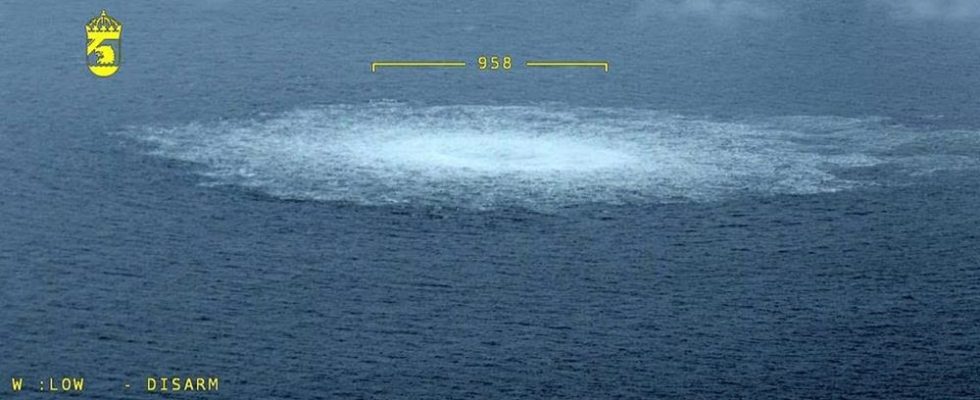At the time, we were still talking about “leaks”. On September 26, 2022, the Danish and Swedish authorities noticed something abnormal in the Baltic Sea. The water seems to boil, large bubbles form on the surface. What happened that day? Very quickly the source of this phenomenon is identified: methane is escaping from the Nord Stream I and II submarine conduits, which connect Russia to Europe. It remains to find the how, and the why. More than five months later, the investigation has not yet made it possible to determine the whole story, but it brings new elements. And if all eyes were first turned to Russia, a new track is studied.
What we know
The Swedish authorities confirmed, a few days after the incident, that it was “sabotage”. Four tremors comparable to explosions were recorded, and remnants of explosives were discovered. Since the invasion of Ukraine by Russia, the Nord Stream I and II gas pipelines were the subject of negotiations. Moscow threatened to cut off this source of energy from Europe. Repairs could cost up to $500 million.
Since then, Swedish, Danish and German investigators have been trying to trace the trail. Russia has also opened an investigation for “act of international terrorism”. A boat suspected of having been used in the operation to sabotage the two underwater gas pipelines was searched in January as part of the investigation carried out in Germany into this operation, the German federal prosecutor’s office said on Wednesday.
This information comes as several media claimed on Tuesday that the investigation had identified that a boat had left Rostock, a port in northern Germany, in September with a team of six people on board carrying the explosives intended to blow up the gas pipeline.
According to the weekly Die Zeit, as well as public broadcasters ARD and SWR, the boat was rented by a Polish-based company “apparently owned by two Ukrainians”. False passports were used for the rental, according to the same sources. The boat is said to have left Rostock on September 6 and was located near the Danish island of Christiansø. Traces of explosives were detected “on the cabin table” of the boat returned “uncleaned” to its owner, writes Die Zeit.
What remains unclear
“The identity of the perpetrators and their motives are the subject of an ongoing investigation”, adds the German public prosecutor’s office, specifying that “it is not possible for the moment to make solid statements on this subject, in particular on the question of state management” of the sabotage operation of Nord Stream I and II. “No suspicion weighs on the employees of the German company which rented the ship”, indicates the press release.
“Even if leads lead to Ukraine, the investigators have not yet managed to determine who commissioned” the operation, underlines the weekly Die Zeit. A “pro-Ukrainian group” is believed to be behind the sabotage, wrote on Tuesday New York Timesbased on information seen by US intelligence.
Ukraine denies any state involvement, and says the country has not heard of such a group. It therefore remains to prove the identity and motives of the pilots of these boats, if it turns out that they are involved. Especially since the United States is not cleared of all suspicion, and would have had an interest in the gas pipelines being blown up, for commercial reasons.
In parallel with this investigation, scientific investigations must also determine the real environmental impact of the incident. A “climate bomb”? Not really, according to the Commissariat for Atomic Energy and Alternative Energies (CEA). Methane released into the atmosphere remains high – equivalent to half of Switzerland’s annual emissions – but what scientists are most worried about is the effect within the marine ecosystem. So much gas could poison the fish, and modify the food chain.
